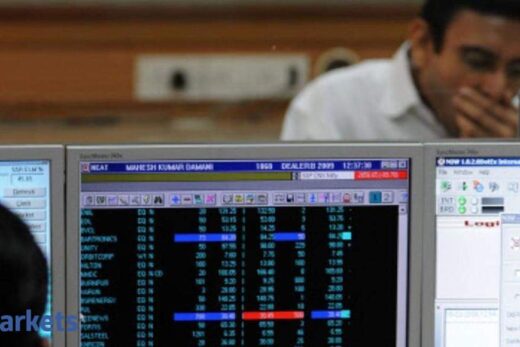Regardless of fundamentals, what determines the flow of mega bucks to the relatively capital-deficient emerging markets during protracted periods of global instability is the lure of the carry trade. It involves borrowing cheaply in New York, London or Tokyo, deploying the garnered cash in high-growth assets, exiting them when in the money, and pouching the profits.
Allure of this carry trade in Mumbai equities should remain undiminished as long as US yields climb in a steady gradient – and resources-importer India cements its credentials as a growth leader among competing regional economies, having successfully negotiated energy and commodity price spirals.
On Thursday morning India time, Fed Chair Jerome Powell told US lawmakers that the recovery in the world’s biggest market is still very much WIP, and that it will take long for the economy to reach the inflation goals set by the central bank. Until the 2% average inflation target is reached, the Fed is unlikely to turn off the liquidity spigot.
“We believe we can do it, we believe we will do it. It may take more than three years,” Powell told lawmakers, ET reported in its Web edition.
When Less Is More
Prima facie, Powell’s testimony is very good news for countries like India, where equities have lately surged, buttressed by fund flows from the global money hubs where trillions of dollars of bonds and risk-free assets are still yielding negative, particularly in the Euro zone. Washington’s decision to persist with an accommodative funds-supply stance dovetails neatly with the business model of the carry-trade proponents – across asset classes and geographies.
September was the last calendar month in which overseas funds were net sellers in Mumbai equities. From October through February, foreign institutional investors (FII) have been net buyers of about Rs 1.87 lakh crore of Indian stock, explaining the 50 percent-plus surge in the Nifty to record levels beyond 15,000.
Now, we must analyse this steep climb from the late September lows. A study of the US 10-year yield table and the Nifty suggests that extremely low debt rates do not immediately – or necessarily – translate into fund flows for the emerging markets.
The US 10-year yielded less than 100 basis points for the whole of 2020 after March 19, and it hit a closing low of just about half a percentage point on August 4. Yields in this period rarely crossed 70 basis points consistently: Yet, the combined net FII purchases of Indian stock between May and August were less than 60 percent of what Mumbai got as a Diwali bonus in November alone.
A Fab Feb
Theoretically, the 45-basis point increase in the US 10-year yields since the beginning of 2021 isn’t great news for the Sensex and the Nifty, where overseas funds have disproportionate ownership and are, effectively, the market makers. But their persistence with Indian equities through February, exceeding December’s Rs 48,000 crore of net purchases, suggests New Delhi’s growth prospects still overshadow concerns stoked by the rise in US yields.
“The aggregate top line for BSE 200 stocks shot to above the pre-Covid level for the first time since the lockdowns,” UBS said in a note to clients after an analysis of the December-quarter earnings.
“With continued cost control, aggregate operating profit grew 14% YoY,” UBS said in the note published earlier this month. “Looking at a nine-month view, around 45% of the top 200 companies have grown revenue YoY, while 55% have seen operating profit improve YoY, indicating some level of “pent-up” demand has flown through. FY22 Nifty EPS is up 6% since January 1, (and) the biggest upgrades were in metals, autos and financials.”
These are the sectors that almost exclusively depend on domestic demand for revenue growth. Barring some input cost pressures, the overwhelming size of the local market should ensure revenue and growth visibility for a major chunk of India’s domestic-facing companies,
In a world just beginning to clamber out of the Covid sinkhole, finding such investment options would be rare. Hence, India should remain relatively insulated against US yield movements as long as it builds on its double-digit growth promises and sticks to the altered fiscal rectitude milestones.



